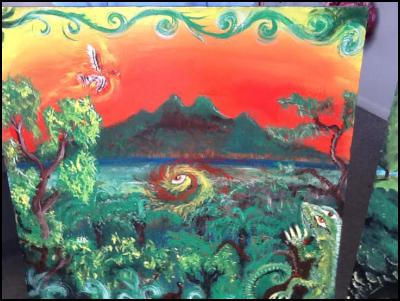SafeGrowth for Kids
SafeGrowth for Kids

Fleur Knight is a teacher from Murrays Bay School, Auckland, New Zealand. Fleur’s role as “Real Learning Facilitator” involves making learning as real as possible for students. To achieve this, Fleur works alongside teachers to integrate CPTED (Crime Prevention through Environmental Design) understandings and Safe Growth philosophies into the teaching of 9-10 year olds. Fleur does this because the “Social Sciences” strand of the New Zealand Curriculum states that students are expected to explore how societies work so they themselves can participate and take action as critical, informed and responsible citizens.
The question Fleur initially asked was, how could this be achieved?
Fleur feels strongly about the need to involve our youth in supportive, interactive relationships with neighborhoods. How can we expect our youth to participate and take action as critical, informed and responsible members of future neighbourhoods, if they are not taught, and do not experience how they can achieve these lofty aims in real life contexts?
Over the last 6 years Fleur has integrated CPTED into programmes that have involved working with Kindergartens, Starship Hospital, rest homes, other Primary Schools, Intermediate schools and local communities.
Fleur recently took the learning of students to a new level that involved them not only learning about and applying CPTED Principles but implementing Safe Growth with residents of Sunnynook to improve a local bus station.
On the 6th of June 2014, Fleur, Rebecca Baird,
the classroom teacher and students from Room 25 at Murrays
Bay School worked with Auckland Transport, and
travelled
to Sunnynook Bus Station. They carried out a CPTED Safety
Audit of Sunnynook Bus Station using safety maps. Their
findings were:
Star areas identified at Sunnynook Bus Station.
* Excellent maintenance- pest control for rats and mice.
* Security cameras excellent natural surveillance.
* Fencing in front of the storm water drains
* Emergency buttons
* Braille outside the toilets
* Ramps had excellent natural surveillance and natural access control
* Bus bays had excellent natural surveillance
* Bins were fire proof.
* Gardens were well maintained
* Bus timetable was clear and easy to read with excellent natural surveillance.
Orange Areas identified at Sunnynook Bus Station.
*Stairs to platform 1 were steep
*Storm water drains attracted vandals
*Stairs were too wide and deep for our disabled student to use
*Wheelchair access had poor visibility
*Concrete walls were dull and lifeless.
*Toilet door was hard to open
Red areas identified at Sunnynook Bus Station.
*Emergency services had poor natural access control to the bus station. They have to drive into the bus station to address any emergencies. .
*Signage for platform 1 was not clearly visible from the opposite platform.
It is hard for non-English speaking people to understand the automated voices in the toilet.
*Doors are heavy for the elderly/children, disabled.
*Access from one platform to another was very confusing, and encourages commuters to run across the bus pathway in front of traffic.
*The walls around the bus lane are up to 4 metres high, grey, lifeless.
From this CPTED Safety audit the students made the following recommendations:
Recommendations for Sunnynook Bus Station.
*Improve signage between platforms
*Oil toilet door or reduce the weight of the door, to make it easy to open.
*Add artworks to make the bus station more inviting and welcoming.
ends


 Gordon Campbell: On The Trump Upside, And Peters Persecution Of Trans People
Gordon Campbell: On The Trump Upside, And Peters Persecution Of Trans People Save the City-to-Sea Bridge: Join on Sunday afternoon to save Wellington’s City-to-Sea Bridge
Save the City-to-Sea Bridge: Join on Sunday afternoon to save Wellington’s City-to-Sea Bridge New Zealand Defence Force: Second World War Veterans Receive Message From King Charles
New Zealand Defence Force: Second World War Veterans Receive Message From King Charles New Zealand Government: More Than 900 Health Graduates To Receive Financial Boost Through Bonding Scheme
New Zealand Government: More Than 900 Health Graduates To Receive Financial Boost Through Bonding Scheme New Zealand Police: Stacks Of Cocaine Unpacked In Mt Wellington
New Zealand Police: Stacks Of Cocaine Unpacked In Mt Wellington Te Pāti Māori: Te Pāti Māori Make Submission To Privileges Committee In Absentia
Te Pāti Māori: Te Pāti Māori Make Submission To Privileges Committee In Absentia PSA: PSA Forces Changes To Restructure Of Data & Digital And Pacific Health
PSA: PSA Forces Changes To Restructure Of Data & Digital And Pacific Health


